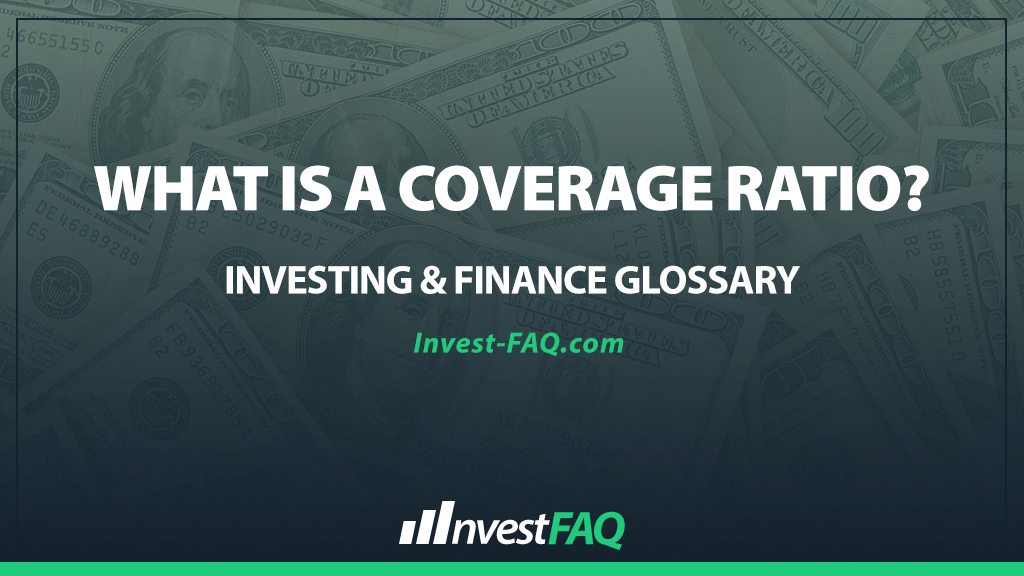
Coverage Ratio
Contents
A coverage ratio is a financial metric used to evaluate a company’s ability to meet its financial obligations, typically measured by comparing a company’s operating income or earnings to its debts and liabilities. These ratios are crucial for investors, lenders, and management to assess the financial health and risk level of a business.
Coverage ratios come in various forms, including the interest coverage ratio, debt service coverage ratio, and asset coverage ratio, each providing insight into different aspects of a company’s financial stability.
These ratios are used to determine a company’s capacity to pay off its debts, interest on loans, or other obligations, thus indicating the likelihood of default. For businesses, maintaining healthy coverage ratios is vital for accessing new credit, negotiating favorable loan terms, and attracting investment.
Example of a Coverage Ratio
Consider “TechGlobal Inc.,” a company with an annual operating income of $500,000. It has annual interest expenses of $100,000. The interest coverage ratio, calculated as operating income divided by interest expenses, would be 5 ($500,000 / $100,000).
In this scenario, TechGlobal Inc.’s interest coverage ratio of 5 signifies that the company earns enough from its operations to cover its interest expenses five times over.
This high ratio suggests that TechGlobal is in a strong financial position regarding its debt obligations, presenting a lower risk to lenders and investors. The ratio provides a buffer against downturns in earnings, offering assurance that the company can meet its interest payments even if income declines.
Types and Uses in Business Scenarios
Coverage ratios are employed across a variety of business scenarios, including:
Loan Applications: Lenders evaluate a company’s coverage ratios to decide whether to approve a loan and determine its terms.
Investment Analysis: Investors use these ratios to gauge a company’s financial health and the risk of investing in its debt or equity.
Financial Performance Monitoring: Management teams monitor coverage ratios to manage debt levels and operational efficiency effectively.
Credit Rating Assessments: Credit rating agencies consider coverage ratios when assigning credit ratings, which influence the interest rates companies receive on their borrowings.
Significance for Investing & Finance
From an accounting perspective, the significance of coverage ratios lies in their ability to:
Highlight Financial Strength: They provide a quantifiable measure of a company’s ability to fulfill its financial commitments, reflecting operational efficiency and financial stability.
Inform Strategic Decisions: Healthy coverage ratios can support strategic decisions by facilitating access to capital, enabling expansion, or allowing for refinancing under more favorable conditions.
Aid Compliance and Reporting: Maintaining strong coverage ratios is often a covenant in loan agreements, requiring accurate calculation and reporting to comply with financial agreements and regulations.
In summary, a coverage ratio is an essential financial metric that assesses a company’s ability to meet its debt obligations.
It offers valuable insights into the company’s financial health, influencing lending, investment, and strategic decisions. Understanding and optimizing coverage ratios are critical for maintaining financial flexibility and ensuring long-term sustainability.
FAQ
How does an improving interest coverage ratio impact a company’s ability to secure loans?
An improving interest coverage ratio indicates stronger financial health, making a company more attractive to lenders and potentially leading to better loan terms, including lower interest rates and more favorable repayment conditions.
Can a high debt service coverage ratio affect a company’s investment appeal?
Yes, a high debt service coverage ratio signifies that a company generates sufficient earnings to cover its debt obligations comfortably, making it a more appealing option for investors seeking stable returns with lower risk.
What does a low asset coverage ratio indicate about a company’s financial position?
A low asset coverage ratio suggests that a company may not have enough tangible assets to cover its debt obligations in case of liquidation, signaling higher financial risk to creditors and investors.
How do coverage ratios influence a company’s credit rating?
Coverage ratios are key indicators of financial stability and risk; therefore, strong ratios can lead to higher credit ratings, which facilitate lower borrowing costs and better access to capital markets.
